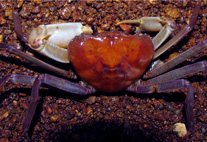Abstract
A taxonomic study of Eunice species based on material deposited in the Marine Biological Museum of the Chinese Acad-emy of Sciences (MBMCAS) including recently collected specimens from coastal regions of Hainan Island, yielded two new species: Eunice hainanensis n. sp. and E. carrerai n. sp. Both species were collected from dead coral rocks in the reefs of the coastal region of Hainan Island, northern South China Sea. Eunice hainanensis has translucent bidentate sub-acicular hooks and branchiae present over an extensive region of the body. Within the Eunice group possessing these char-acters, the new species highly resembles E. schizobranchia Claparède, 1870 in having a numerous chaetigers and a very late start of branchiae (348–570 chaetigers with branchiae from chaetigers 69–72 vs. 731 chaetigers with branchiae from chaetiger 67). However, the two species differ by the presence of the maxillary plate VI (MxVI) in the new species (vs. absent in the latter). Besides, E. hainanensis is much smaller (1.7–1.9 mm vs. 5 mm in maximal width). Eunice carrerai belongs to the Eunice group that has dark bidentate subacicular hooks and branchiae present over an extensive region of the body. It can be distinguished from similar congeners that have the branchiae starting from chaetigers 3–4 and prosto-mial appendages with moniliform articulations by a combination of characters such as the presence of MxVI, notopodial articulations limited to anterior chaetigers, peristomial cirri articulated and extending to anterior edge of first peristomial ring. A key to 16 species of Eunice identified from China seas in the material examined with notes on their distribution is provided. The major characters of these species are briefly summarized.

